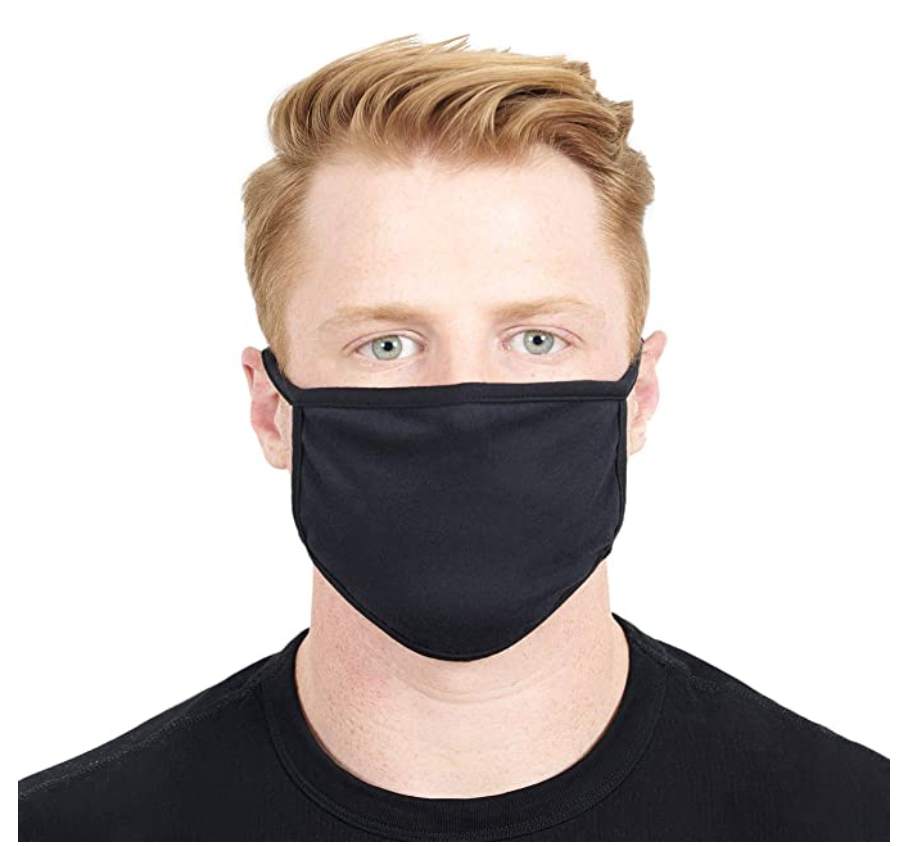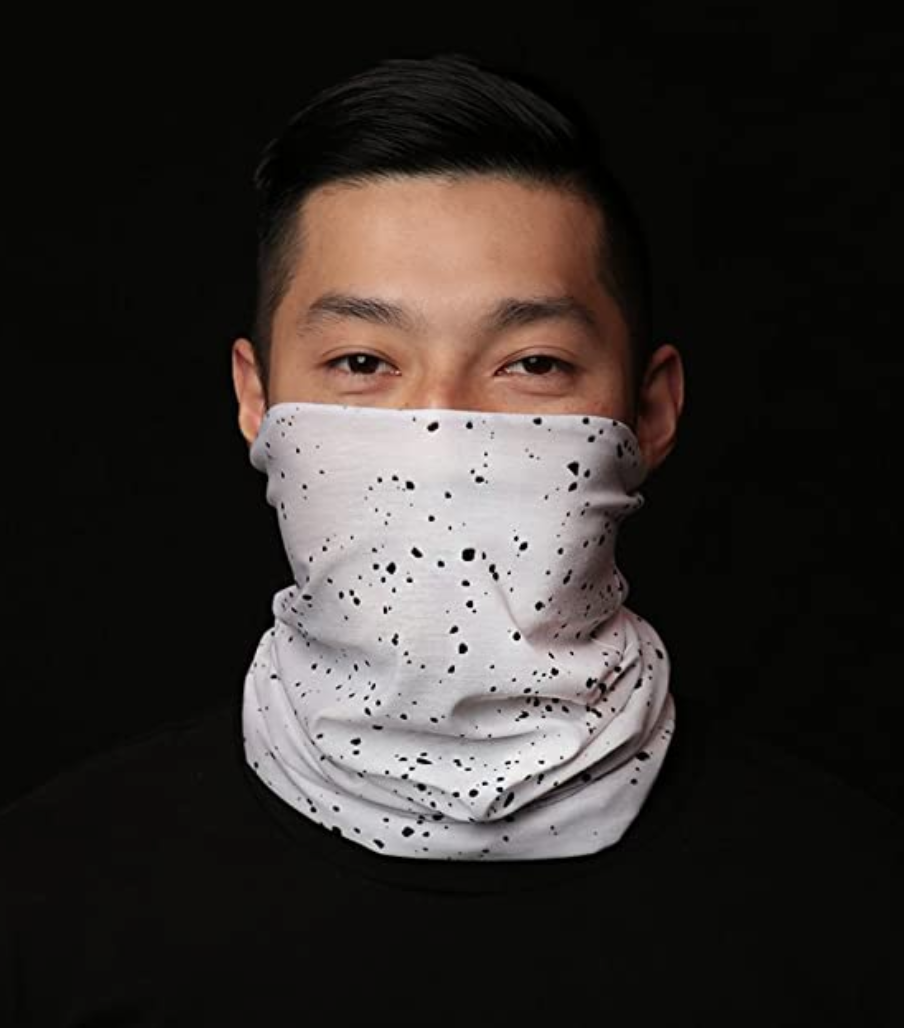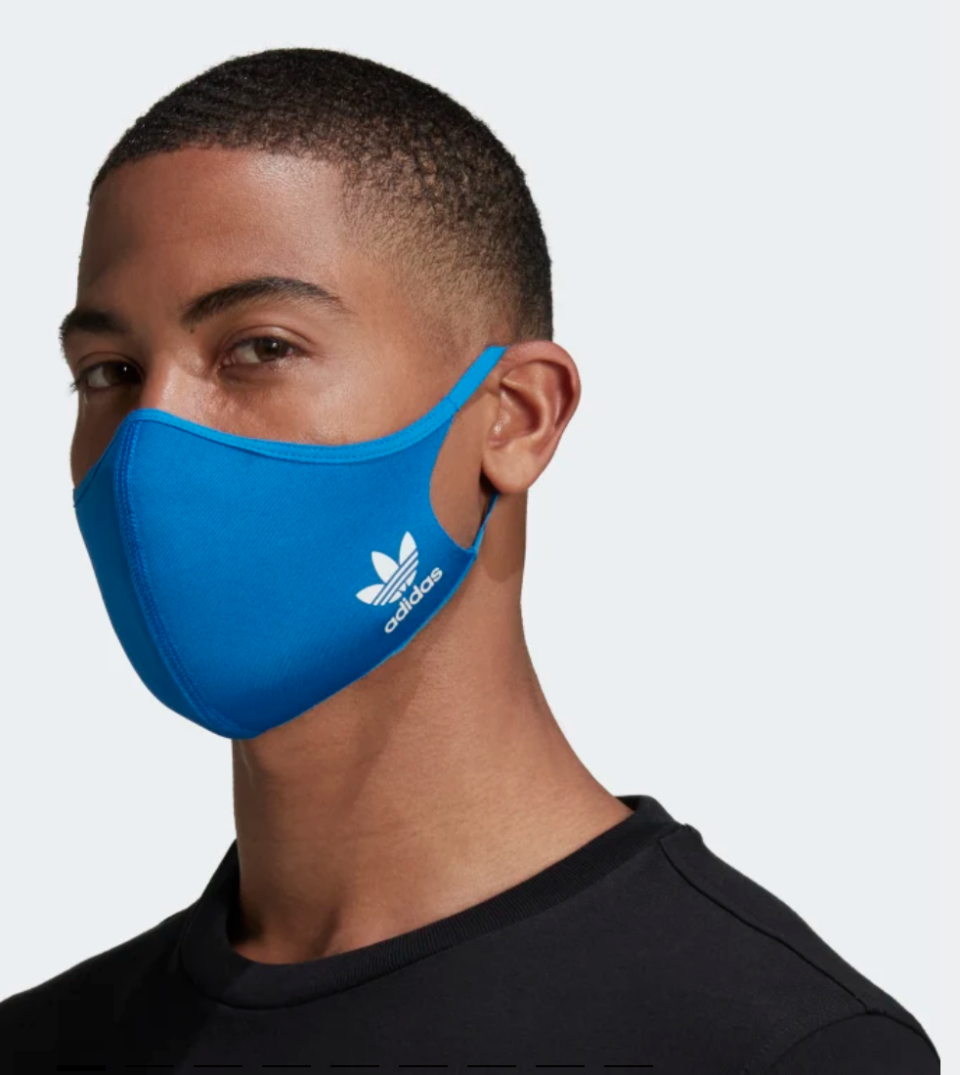Your face mask cheat sheet: The who, what, where, when and why
Masks are a part of our new normal—and they probably will be for awhile. But if you’ve purchased a style only to find it uncomfortable or too large (hello, gaps), we’re here to help. Save time, aggravation and cash with our comprehensive guide to the different kinds of masks on the market right now.
Lifestyle expert Anna De Souza takes you through the newest fabrics and styles, discusses where each mask should be worn and covers the latest recommendations from the CDC so you can find the perfect fit for work, play and more.
N95 masks
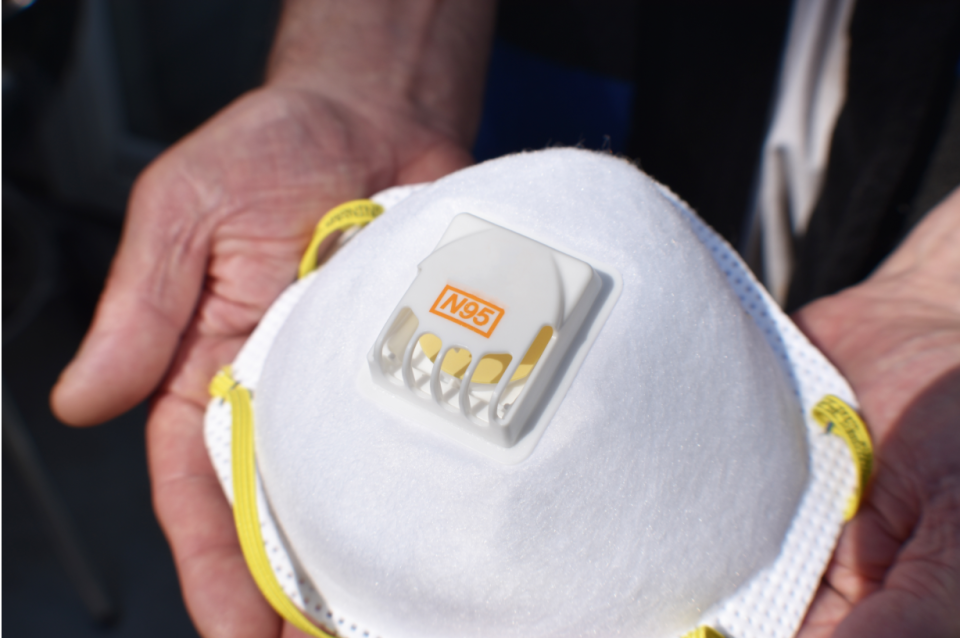
N95 masks are designed to offer a tight seal around the nose and mouth. When fitted properly by trained professionals, they filter 95 percent of airborne particles, according to the CDC.
As you’ve probably heard, N95 respirators should be reserved for medical personnel. If you have any in your home, consider donating them to medical professionals in need through services like Mask Match.
Surgical masks
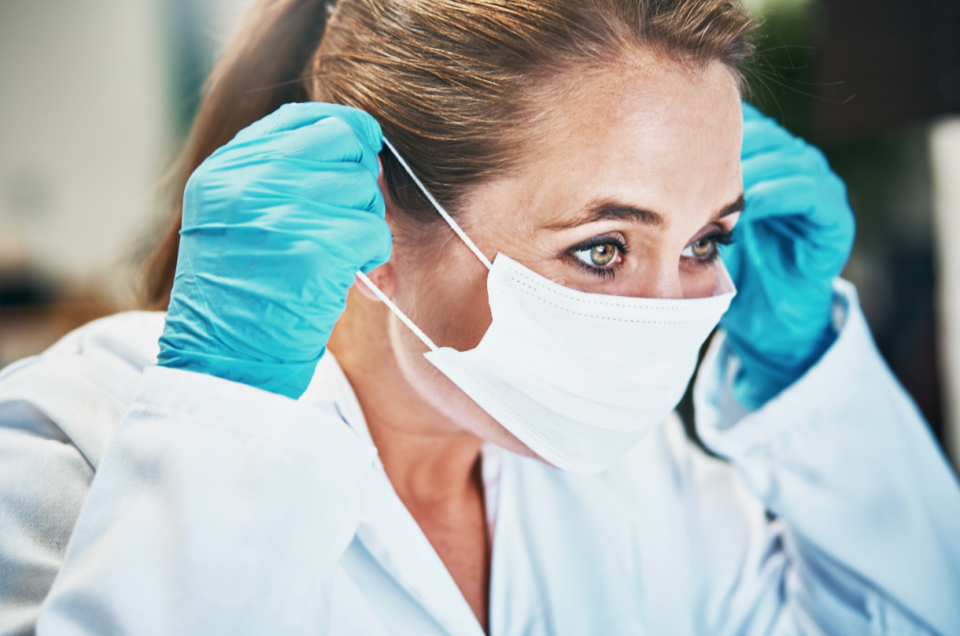
Like N95 masks, surgical masks are critical supplies that should to be reserved for healthcare workers and other medical first responders, according to the CDC.
You’ve likely seen this type of mask in a doctor’s office. Made of non-woven fabric, it fits loosely over the nose and mouth. While it shields against cough and sneeze droplets, it won’t protect against smaller droplets because it’s not flush to the face. Moisture from wear renders it disposable after eight hours.
These paper-thin masks trap particles with an electrostatic charge. “The static charge can help retain droplets and other particles,” explains Dr. Stephen Cobb, Chief Medical Officer for Metro Denver Hospitals. “It is not known how much this may reduce the risk of infection, but there is a theoretical benefit,” he adds.
Molded and dust masks
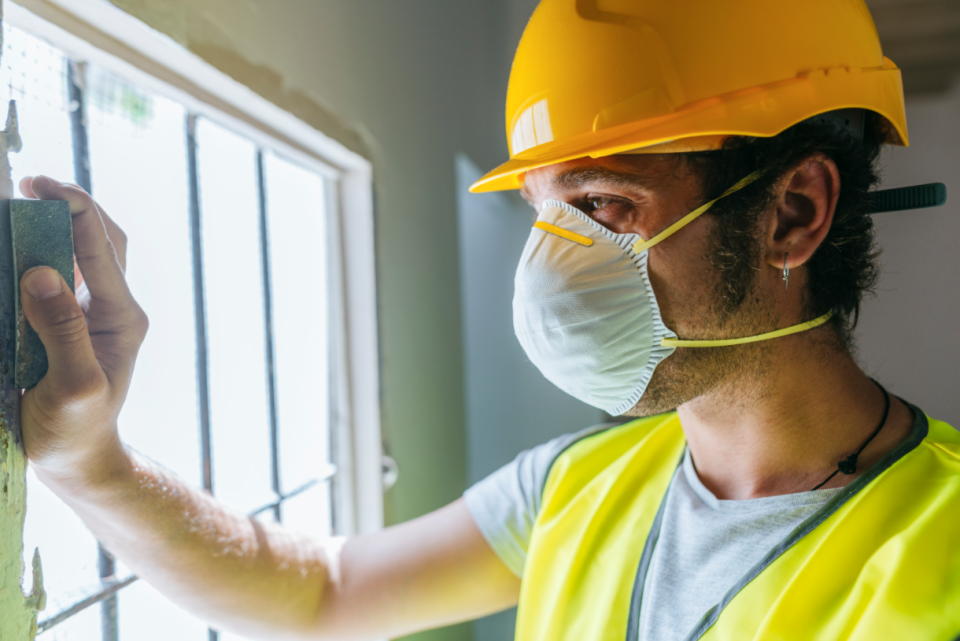
Dentists and contractors commonly use molded masks. They’re fluid resistant and feature metal bands to secure them onto the bridge of the nose.
Molded masks are typically easy to breathe through because of their 3D shape—the cups don’t fold in with each breath. But they also don’t have the same certifications as N95 masks.
Cloth masks
The CDC recommends that everyone over the age of two wear cloth face coverings when in public and around people outside of their household, especially when other social distancing measures are difficult to maintain.
The reasoning behind this new recommendation, the CDC website says, is because recent studies indicate that a high number of individuals with the novel coronavirus are asymptomatic—and the virus can be transmitted to others before symptoms become apparent. By wearing a cloth mask, you add an extra layer of protection between yourself and others when speaking, coughing or sneezing.
There are many different fibers to choose from but thicker, densely woven cotton fabrics are best, according to Johns Hopkins Medicine.
This study from the University of Chicago and Argonne National Laboratory backs that up: Cloth face masks made from fabrics with tight weaves, like cotton, natural silk, flannel and chiffon can provide significant protection by filtering out aerosol particles. Combining fabrics—high thread count cotton with two layers of silk or two layers of chiffon, for example—is also effective, according to the study. What’s not great? Porous fabrics and low thread count cotton (80 thread count was tested).
You shouldn’t be able to see through the a cloth mask if you hold it up to a light. Fit is critical, as well. The study found that big gaps can lead to a 60 percent decrease in filtration efficiency.
Shop cloth masks:
Shop it: New Republic Made in USA masks (shown above), $12 for three, amazon.com
Shop it: 5X Masks — L.A. Protects, $25 for five, thereformation.com
Shop it: Face Mask Rose Pattern, $5, etsy.com
Shop it: Custom Smile Mask, $30, coolforschoolphoto.com
Cloth masks with filter pockets
One popular style on the market is a mask with a decorative outside layer and an interior pocket that houses a filter. Some masks come with a filter; others just provide the pocket. When using a filter, just make sure the material doesn’t contain fiberglass or other toxic materials. You can even use coffee filters or paper towels in a pinch.
Some fabrics tout anti-bacterial and anti-microbial properties. TRU47 recently debuted masks lined with 99.99 percent pure ionically bathed silver. Silver has shown to be a powerful anti-bacterial, so if you’re suffering from acne and skin irritation due to friction or heat and wetness buildup under your mask it might be something to consider. Keep in mind these fabrics are not CDC approved to prevent COVID-19.
Shop cloth masks with filter pockets:
Shop it: Tie-Dye Mask, $15 (shown above), stevemadden.com
Shop it: Silver Mesh Pleated Mask, $49, tru47.com
Shop it: Sanctuary Organic Cotton Ear Loop Reusable Face Masks, set of 3, $24, anthropologie.com
Shop it: Three-Pack Non-Medical Face Masks, $15, madewell.com
Shop it: Protective Mask, $10, shopvida.com
Shop it: American Mask Project Reusable Cloth Face Mask, $20 for two, amazon.com
Cloth masks with valves

Masks with valves are comfortable to wear, since they push out carbon dioxide buildup and humidity. But they don’t protect others since they can allow viruses to pass through.
“These masks were designed as an added comfort measure for those looking for protection from pollutants, like a painter, or somebody with allergies while mowing the lawn,” explains Dr. Cobb.
When it comes to coronavirus, however, these masks are unfortunately counterproductive and not recommended by the CDC.
Gaiters and bandanas
Bandanas and neck gaiters are typically made of polyester or other synthetic materials. In the event of a mask shortage, the CDC says “medical professionals might use homemade masks (e.g., bandana, scarf) for care of patients with COVID-19 as a last resort.”
Gaiters are designed as a ‘tube’ that you put over your head and lift up to cover the mouth and nose. Some are like bandana/gaiter/face mask hybrids, with handy ear loops.
Since bandanas and gaiters are often made of thin fabric, experts recommend folding them into multiple layers for added protection. Some brands, like Scough, design bandana-like face coverings with secondary layers that include a carbon filter around the nose and mouth. These are a great option if you have facial hair, as it’s recommended your mask completely cover a beard.
“If you have facial hair, make sure your mask extends beyond the facial hair and rests on actual skin,” says Dr. Rhonda Kalasho, double-board certified dentist in Los Angeles. “Facial hair can create escape routes around the mask that can lead to the exposure of respiratory vesicles and pathogenic debris.”
Shop gaiters and bandanas:
Shop it: Into the AM Seamless Face Cover, $11 (was $13) (shown above), amazon.com
Shop it: Mission Cooling Neck Gaiter, $20, amazon.com
Shop it: Lolong Face Bandana, $16, amazon.com
Shop it: Kezzled Multifunctional Neck Gaiter, $11 (was $17), amazon.com
3D masks
3D cloth masks are usually designed with thicker fabrics to help the mask keep its shape. This origami style mask is a good option for those who may feel claustrophobic having fabric directly touching their skin or asthmatics who need more oxygen. The molded shape allows you to breathe freely without as much restriction. Look for styles that feature two to three layers of fabric and those made from seamless, soft knit fabrics.
Shop 3D masks:
Shop it: Adidas Face Covers, $16 for three (shown above), adidas.com
Shop it: Toile Face Mask, Set of 3, $45, etsy.com
Shop it: CodeBlueLeather Face Mask, Set of 3, from $27, etsy.com
Shop it: Cotton Mask (5 pack), $25, citizensofhumanity.com
Shop it: Camel Scilla Minerva Animal Print Care Mask, $37.50 (was $50), stjohnknits.com
Masks for Kids
Cloth face masks should not be worn by children younger than two years old, says the CDC. For kids two and older, experts and parents agree that the general rule of thumb is to find patterns they love. “Offer different options and let them pick which mask they’re most excited to wear. Perhaps you might let your child decorate a plain mask with markers or stickers to make it feel special,” explains Dr. Harvey Karp, pediatrician and author of the best-selling parent guides The Happiest Baby on the Block and The Happiest Toddler on the Block.
“Lead by example,” adds Trevor George, founder of MaskClub, a branded subscription face mask website that gives back to America’s first responders. “They will catch on, just like wearing a seatbelt or a helmet when riding a bike.”
If you have a child with autism or sensory-related disorders who resists wearing a mask, Dr. Karp recommends breaking the process into steps. “First, cut out the nose and mouth section of a paper mask to get a child more used to putting the mask on the ears. Next, have a couple of other masks with mouth covered, but not nose, then a completely intact mask,” he explains. Reward each step of cooperation.
Creating a comfortable and relaxing routine around mask-wearing may also help ease some of the anxiety. “Give your child notice when it’s almost time to wear a mask,” says Dr. Karp. “Concrete cues, like a timer, may help.”
Other ways to make mask-wearing less stressful: Role play with dolls or stuffed animals, have the child name their mask, dab a bit of lavender oil onto the mask, give kids a star on a sticker chart for each successful outing or create a comforting ritual around mask-wearing. “Have a special ‘beddy-bye’ box to store the mask each night so kids could say ‘Good night Mr. Silly Mask,’ when they arrive home,” suggests Karp.
Look for masks with soft seams that won’t irritate your child’s skin, and a pleated front to comfortably cover the nose and chin.
Shop masks for kids:
Shop it: Cubcoats Kids Face Masks 2-pack, $15 (shown above), amazon.com
Shop it: Disney Cloth Face Masks, $20 for four, shopdisney.com
Shop it: Made in USA Washable Kid Mask, $12, amazon.com
Video by Kat Vasquez
Read more from Yahoo Life:
Environmentalist donates millions of supplies for frontline workers
Dad uses his face mask to tie off newborn's umbilical cord after wife gives birth outside hospital
Follow us on Instagram, Facebook, Twitter, and Pinterest for nonstop inspiration delivered fresh to your feed, every day
Want daily pop culture news delivered to your inbox? Sign up here for Yahoo Entertainment & Lifestyle's newsletter.
